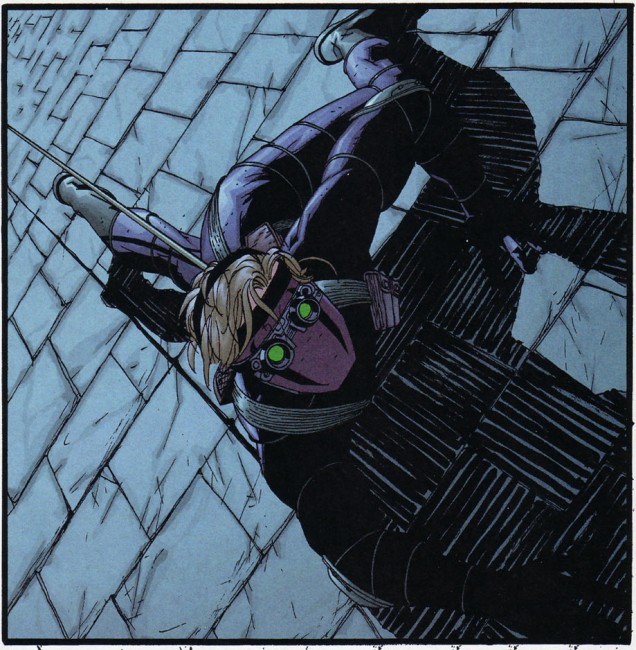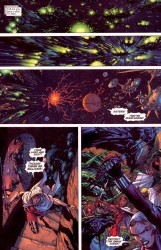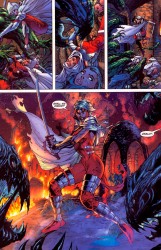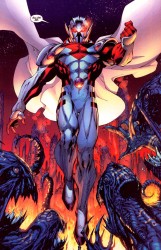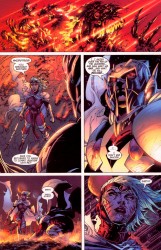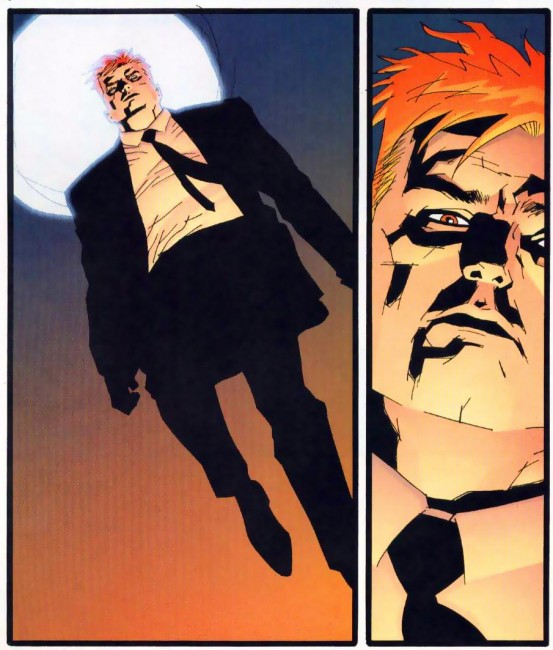
(with a tip of the hat to Morgan Jeske for this week’s gimmick)
It was Jim Lee and Todd McFarlane that hooked me. McFarlane was on Amazing Spider-Man, and later Spider-Man, around the time I was getting into comics. Jim Lee made a huge impression on me with X-Men #1, to the point where I even still have my issue with the crazy gatefold cover after jettisoning most of the old stuff I owned.
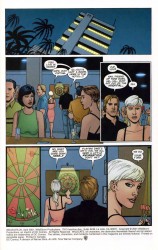
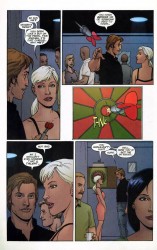
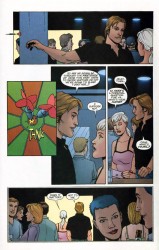
It was only natural that I followed them over to Image, though that was as much a happy accident of trading comics as anything intentional. I stuck with Spawn for a couple of years, inadvertently reading my first Neil Gaiman and Grant Morrison stories in the process. WildC.A.T.s… I’m not sure how long I stuck with it. I definitely read it off and on, like I did everything I was into back then, and I definitely read it because a) I loved Jim Lee’s art and b) Grifter had the best mask in comics, outside of black costume Spider-Man.
Years pass. I quit comics at the height of Onslaught and the Clone Saga. I pick up a couple of Katsuhiro Otomo’s Akira hardcovers on the cheap in 98 or 99, fifteen a piece, and I occasionally browse the racks at my local BX, but I’m not exactly buying anything. I buy my next comic in Madrid, in late 2000, early 2001. It was Norma Editorial’s Spanish language edition of Frank Miller and Lynn Varley’s 300 . I move back to the States in ’02, discover the graphic novels section at Booksamillion in what, early-mid ’03? I pick up Wildcats: Street Smart
. I move back to the States in ’02, discover the graphic novels section at Booksamillion in what, early-mid ’03? I pick up Wildcats: Street Smart because, hey, I liked WildC.A.T.s back in the day! I know Scott Lobdell’s name! The art looks pretty neat! In the end, though, it was just okay in such a way that I didn’t bother looking for more.
because, hey, I liked WildC.A.T.s back in the day! I know Scott Lobdell’s name! The art looks pretty neat! In the end, though, it was just okay in such a way that I didn’t bother looking for more.
I picked up Wildcats 3.0 at some point, I think partway its run. I don’t know why–at the time, Joe Casey and Dustin Nguyen were both completely unknown to me. But it knocked my socks off from top to bottom, from the covers to that weird Wildstorm angular lettering, and I was hooked. A few issues in and I backtracked to Wildcats again, this time pushing past the completely lackluster opening arc and picking up Wildcats: Vicious Circles .
.
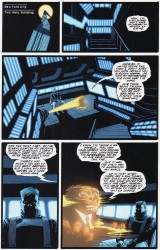
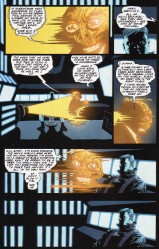
And look, Lobdell and Travis Charest are gone, replaced with Joe Casey and Sean Phillips, with a short assist by Steve Dillon. It’s a dramatic change, as the art went from weird and realistic to a fault to being… ugly. I mean, there’s no flash in Phillips’s work, Wildstorm FX was unusually subdued, and cripes, man, there’s barely even any costumes. The panel borders were super thick, too, what is that about?
It took some getting used to, but once it clicked, it clicked hard for me. I got what Phillips and Casey were doing. Wildcats wasn’t a superhero comic, not in the traditional sense. WildC.A.T.s was about a Covert Action Team fighting a war. Wildcats, then, was about life during peacetime. The war that gave all of the Wildcats their reason for being is a distant memory.
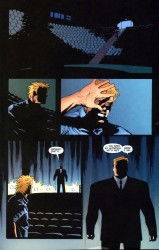
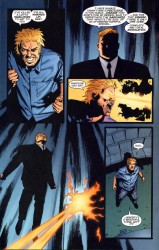
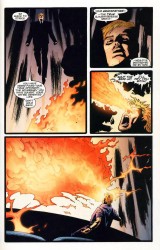
Like Winter Men, Wildcats is about what happens next. The answers varies from person to person. Grifter drifts from place to place and job to job, desperately trying to regain old glories and remaining obsessed with Zealot, his former lover. Priscilla is running from life by drowning in leisure. Jeremy’s trying to prove his love for Pris by “fixing” her. Hadrian, always the soldier, stepped into the shoes of his former boss and attempted to run a company in a forward thinking way. Maxine Manchester… well, she’s more or less the same.
Rather than being about any particular bad guy or conflict, Wildcats is more like the chronicles of an estranged superhero family. Hadrian is the father, but he’s distant and troubled. Jeremy is trying to overachieve and win the approval of others. Pris wants anything but to be part of the family, but doesn’t realize that she has no idea how to be anything but part of the family. Grifter needs a cause, and he’s worthless without one.
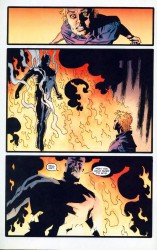
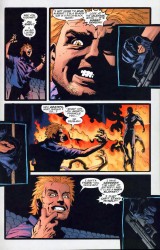
At this point in my comics reading career, I’d picked up Ultimates and Authority. I was regularly reading Chris Claremont and Salvador Larroca’s X-Treme X-Men, Chuck Austen’s Uncanny X-Men, and I think I was just getting into Grant Morrison’s New X-Men. Wildcats, at the time, was the most “out there” book I was into. It starred superheroes, but actively avoided superheroic action. When it came time for one of the big bad guys to have his big showdown, he’s finished off with a bullet in the back of the head. There was plenty of X-Men-style drama, but very little of the accompanying continuity-heavy action and violence.
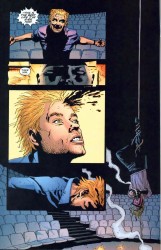
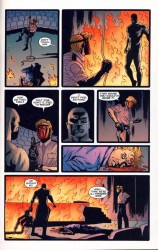
Wildcats was necessary for me. It was definitely part of the process that opened me up to different kinds of storytelling. Phillips is a personal favorite now, and reading comics about regular people doing regular things doesn’t seem so weird any more. Wildcats is story driven, maybe to a fault, and running into it face first while getting back into comics was definitely did me a favor. Of course, it’s all out of print now, though easily available used. DC’s printing Wildcats Version 3.0 Year One later this year, which collects the first twelve issues of that run, but I can’t really see them reprinting the run where Casey found his legs and setup 3.0.
later this year, which collects the first twelve issues of that run, but I can’t really see them reprinting the run where Casey found his legs and setup 3.0.
